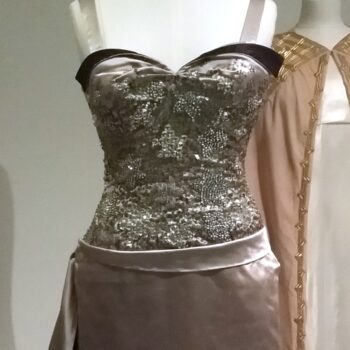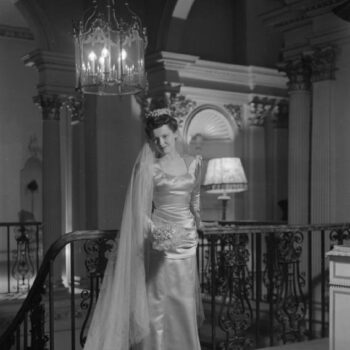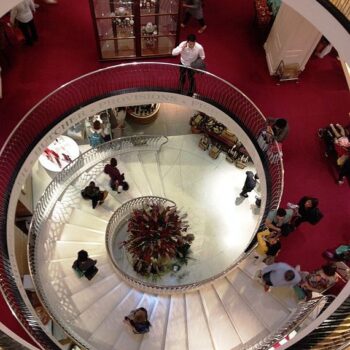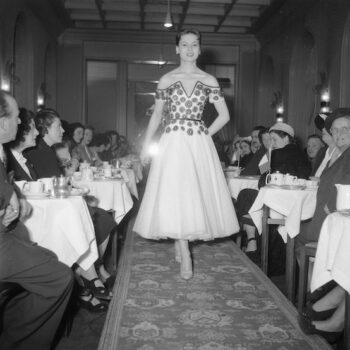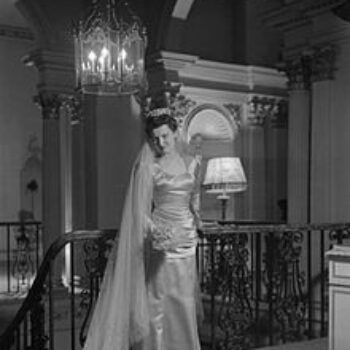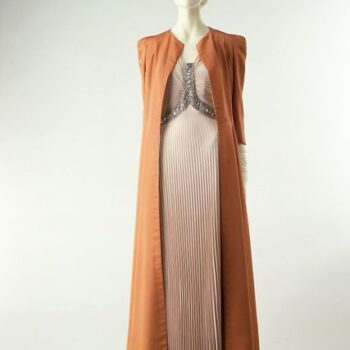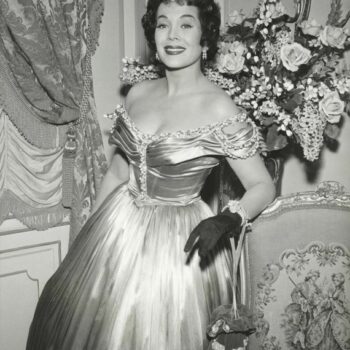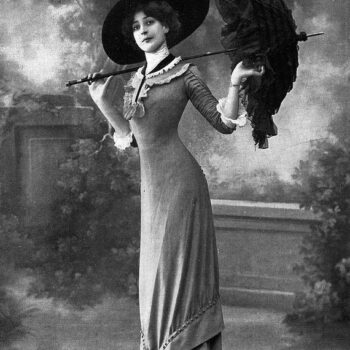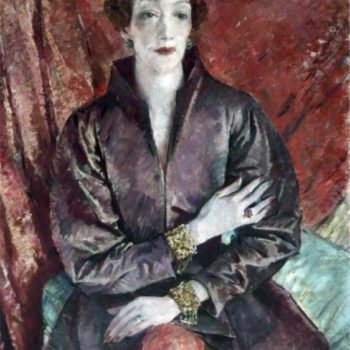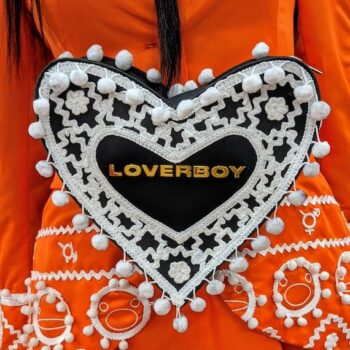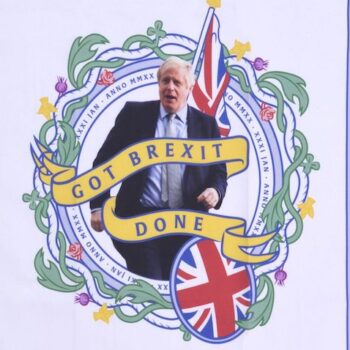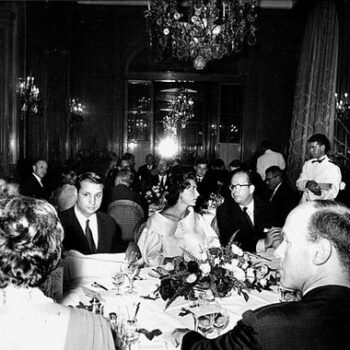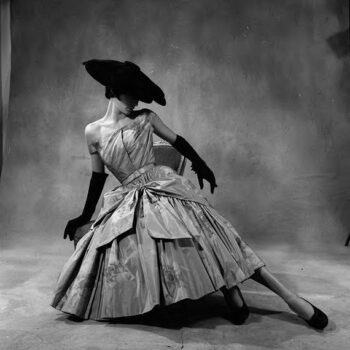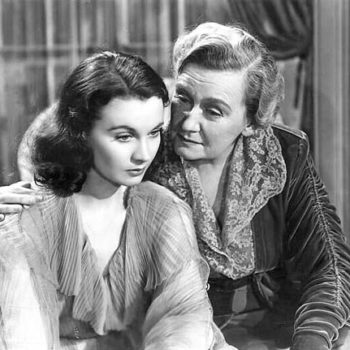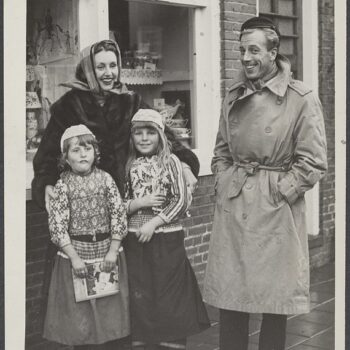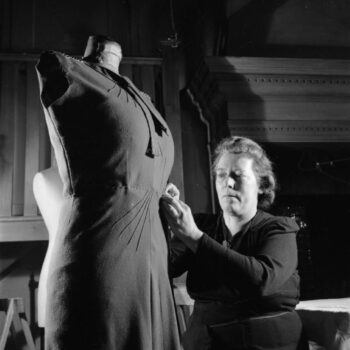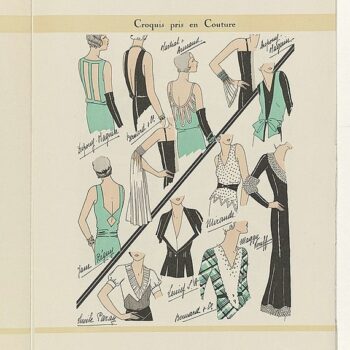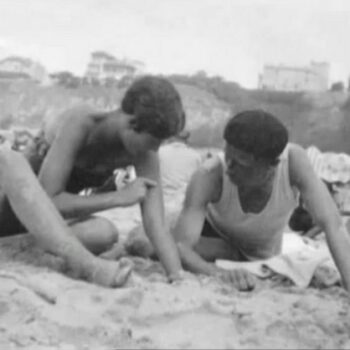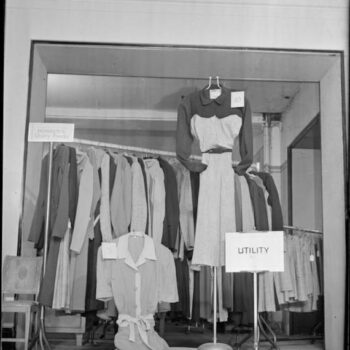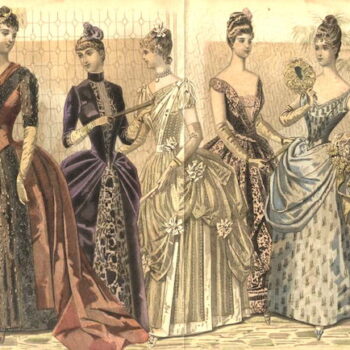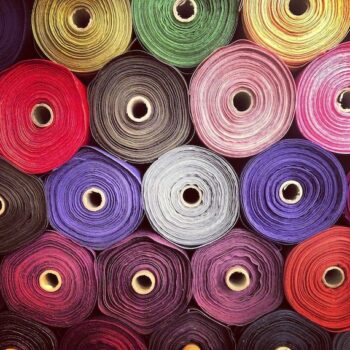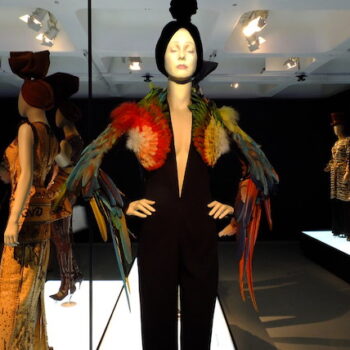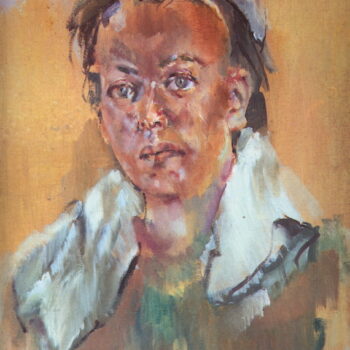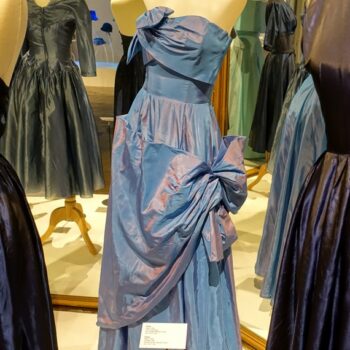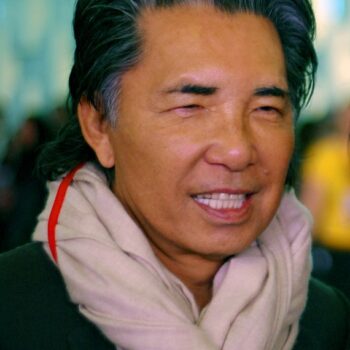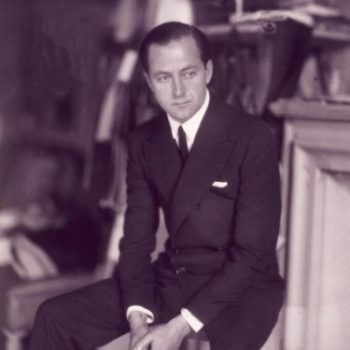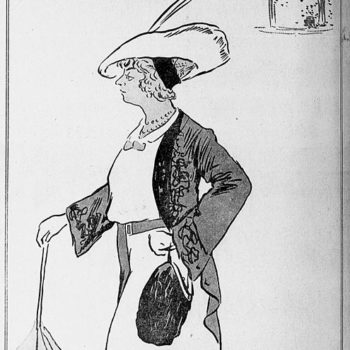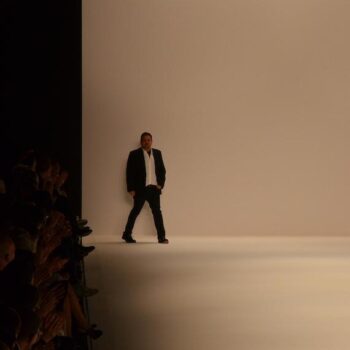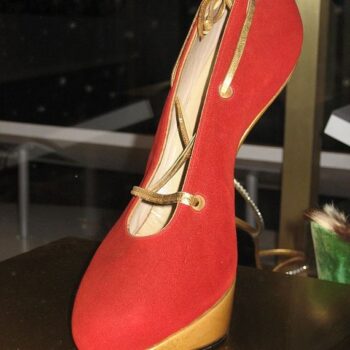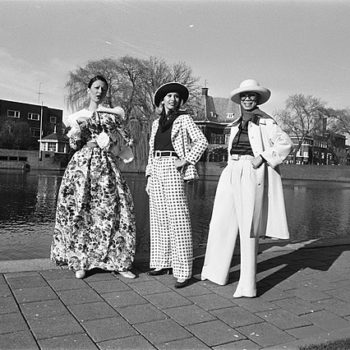Jacqmar – a house of humour and beauty
November 26, 2019Jacqmar was a British company, founded in 1932 as a fabric retail shop. Its name is an amalgamation of its founders: Joseph “Jack” Lyons, and Mary Lyons. The effect was meant to sound kind of French.
Originally a supplier of silk to Paris, the company started making the offcuts into scarves, and finding them popular, began to specialise in this. They commissioned many of these, in silk, wool, rayon and other fabrics, and hundreds are still to be found today. They were always expensive and exclusive. Later on, they expanded their business into couture, hiring well known names like Victor Stiebel as their design directors.

Jacqmar scarf from WW2. Vintage scarf. Image via Pinterest.

Jacqmar scarf from WW2. Vintage scarves. Image via Pinterest.

Jacqmar scarf from World War 2. Propaganda scarves. Image via Pinterest.

Jacqmar of London square scarf from WW2. Silk scarf. Image via Pinterest.

Victor Stiebel for Jacqmar dress, 1954. Image via V and A / Pinterest.

Victor Stiebel for Jacqmar dress, 1954. Image via V and A / Pinterest.

Victor Stiebel for Jacqmar dress. Image via Kerry Taylor Auctions/Pinterest.

Victor Stiebel for Jacqmar dress. Image via Pinterest.
Prestigious Addresses
In 1932, Jacqmar opened on New Bond Street, London. That was a very prestigious address, but by 1936 they had expanded and moved to Grosvenor St, Mayfair, in an area that was positively elite. It was the location for many couturiers, and Jacqmar invested heavily in it. They wanted an address in the area but, no shops or business addresses being available, converted a building from residential use into showrooms, textile design studios and a couture salon. They were the first in the area to do something so daring to an elegant, 200 year old Georgian building, although it did have history as the location for the Oriental club and also a piano-makers.
More recently, Alice Keppel, the famed beauty and mistress of the Prince of Wales lived there, throwing parties for up to 300 people in the huge space. When Jacqmar converted the building, they kept the 18th century interior, originally designed by prestigious architect and interior designer Robert Adam and added to by fashionable designer and colour theorist Owen Jones , who also designed parts of the V&A Museum, in 1860. This grand, old fashioned style came to characterise the look of London’s couture houses.
Jacqmar shared these premises with a silk merchant, court dressmaker and lingerie designer. It was the perfect location: extremely posh and just round the corner from many overseas embassies, whose well-paid visitors and residents enjoyed shopping there.
Famous Names for Jacqmar
The court dressmaker, whose name was Lilian “Leila” Swift, neé Albert, became Jacqmar’s first designer of couture, under the label “Lilian Albert for Jacqmar”. She simultaneously ran her own label, Albert & Johnson Ltd. At the same time, Bianca Mosca worked for Jacqmar, under the label “Bianca Mosca for Jacqmar” and so did Victor Stiebel, with the label “Victor Stiebel for Jacqmar”. Crediting designers like this was a first. Designers generally worked for brands anonymously, unless, of course, it was their own label. All these designers had high profiles of their own independently from Jacqmar so it was certainly a good business move. During its lifetime, Jacqmar was to work with many designers are well as artists and print designers.
In 1938, Jack Lyons died and Allan Allan took over the management of the business.
Jacqmar Patriotic Scarves
During WW2, the couture business continued but Jacqmar found its greatest success in patriotic scarves.
These were great “souvenirs” or little gifts for sweethearts for servicemen from abroad stationed in teh UK. They were a luxury item, expensive and also requiring two coupons each. But, with thier messages in support of the forces, they were a way to be a part of the war effort without sacrificing style. They almost always also featured the company name boldly on the scarf too.
The designs were sometimes straightforward, sometimes whimsical or humorous. Some designs took tongue in cheek inspirartion from propaganda posters, featuring phrases like “Shut that door, Darling” from a poster urging people to conserve heat or even “Ouch! I’m So Sorry! Oy! – Why not wear something white instead?” from a campaign to reduce accidents in the blackout by suggesting people wear white or light colours to show up in the dark. Others were more of a rallying cry: “Standing Shoulder to Shoulder” read one, and “Into Battle” another. Another featured the Allied flags as a posy of flowers.
Made in silk, rayon or wool, they were designed by Jacqmar’s chief textile designer, Arnold Lever. He had joined the RAF but still continued to design scarves for the company. When Lever was demobbed he went straight back to work for them again.
Although they had used rayon or a mixture of silk and rayon during the war because of shortages, afterwards they were keen to regain their prestige and advertised in Vogue that their products were predominantly pure silk. Headscarves were a fashion item right into the 1960s, and Jacqmar’s success in this area never wavered right up till the 70s.
Continuing Success and Expansion of Jacqmar
By the late 1940s, Jacqmar had fifty branches in the UK. They had also expanded to New York, Auckland, Cairo, Cape Town, Buenos Aires, Delhi and Melbourne, Australia. In 1947 they also introduced the “Jac Shop” – probably a semi-couture label aimed at younger customers. In 1948 they were producing commemorative headscarves for the London Olympics.
In 1950 Richard Allan, son of Allan Allan, bought the business from his dad. The same year, Jacqmar launched a ready-to-wear business, which received great reviews. The designs were created by Digby Morton and Mrs Vincent Monte-Sano, “a well-known New York designer”. In 1957 Jacqmar were ready to expand the fabrics and scarves side of the business, and asked Victor Steibel to leave the Grosvenor Street premises, where he had been based for the last two decades. The fabrics had remained a successful proposition, and other designers like Hardy Amies bought their printed rayons and silks.
The company continued until 1972, when both couture and ladies headscarves were both, unfortunately, out of fashion.



